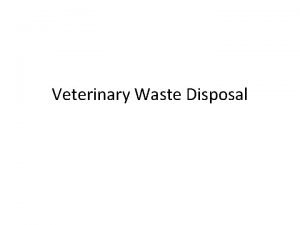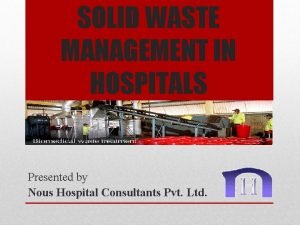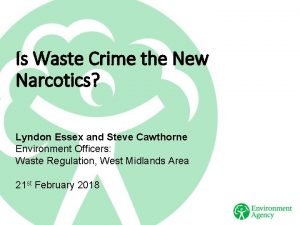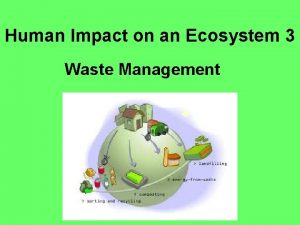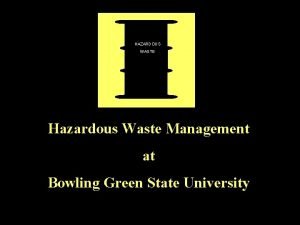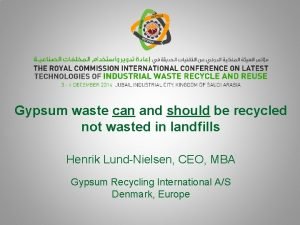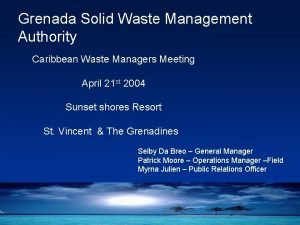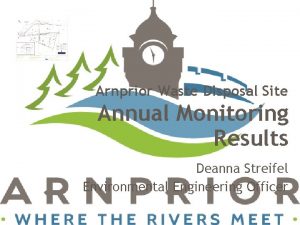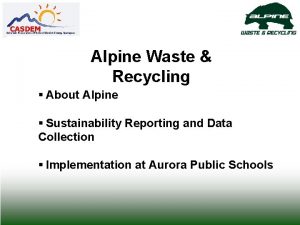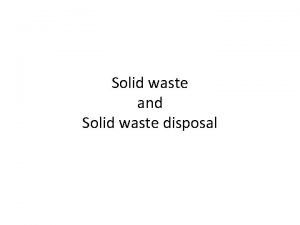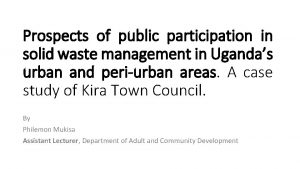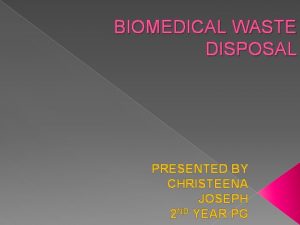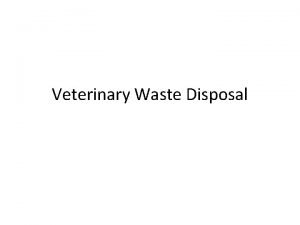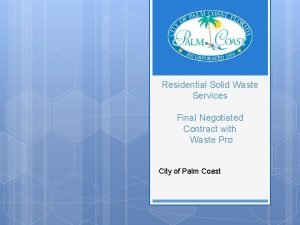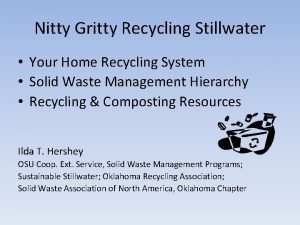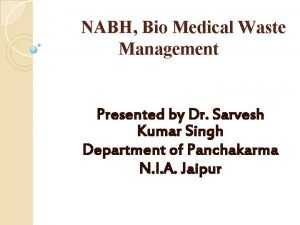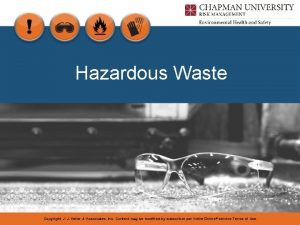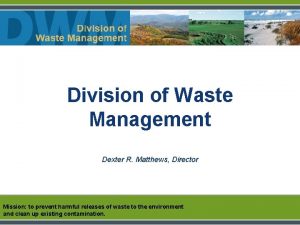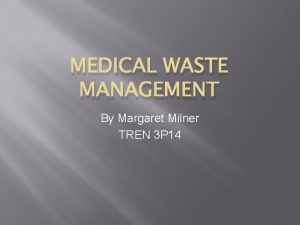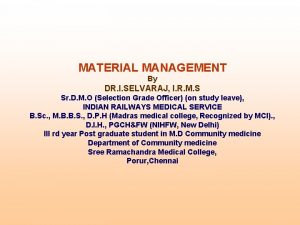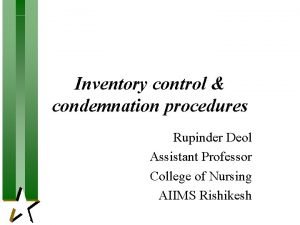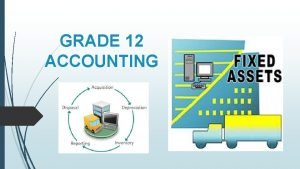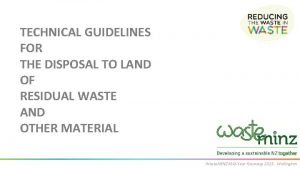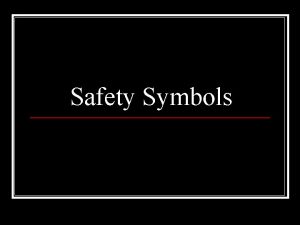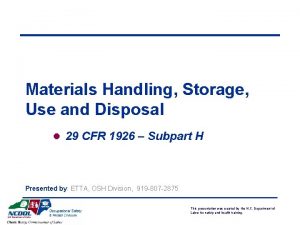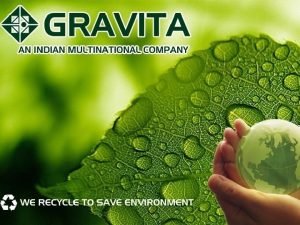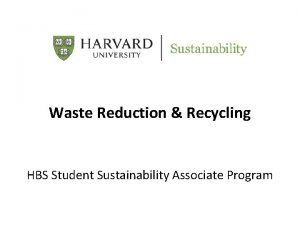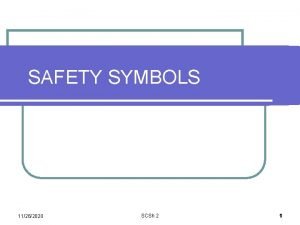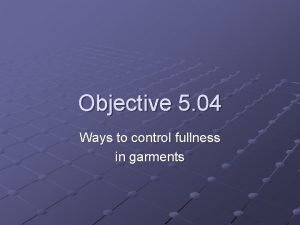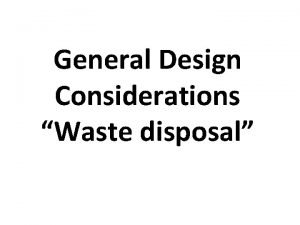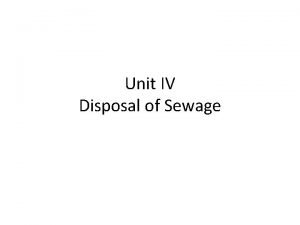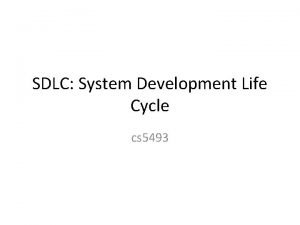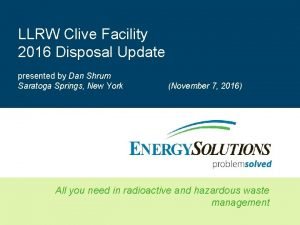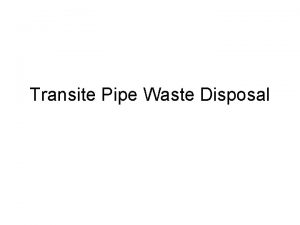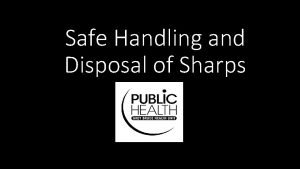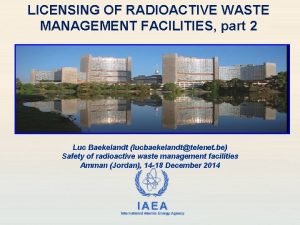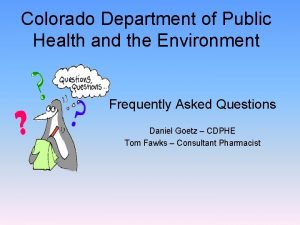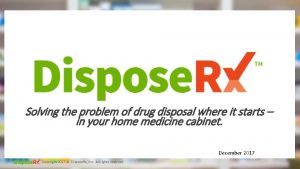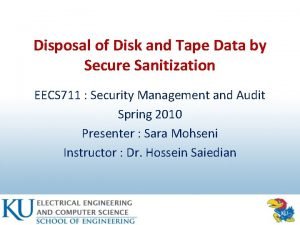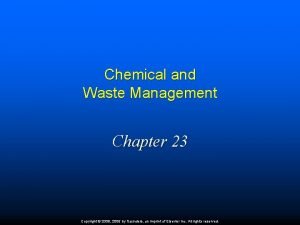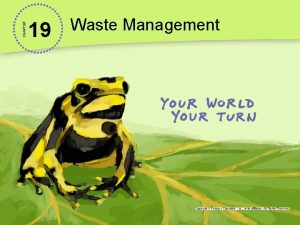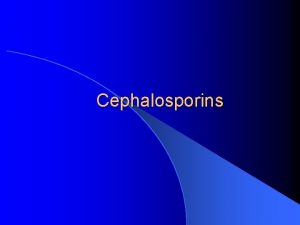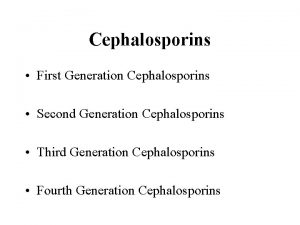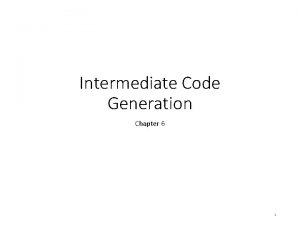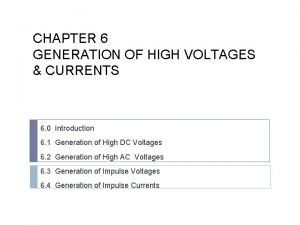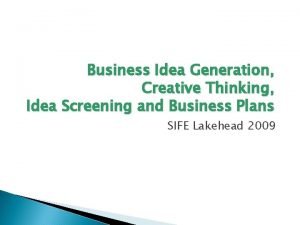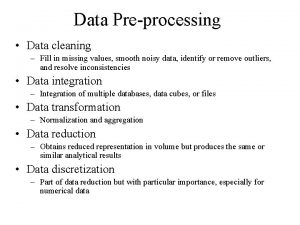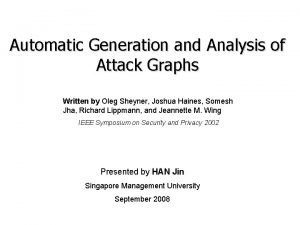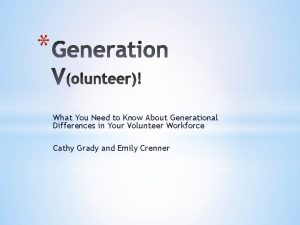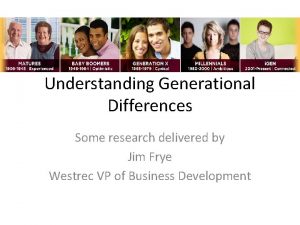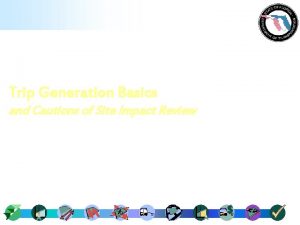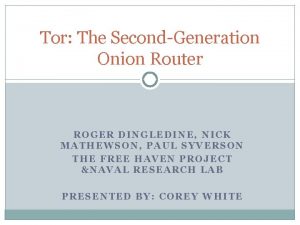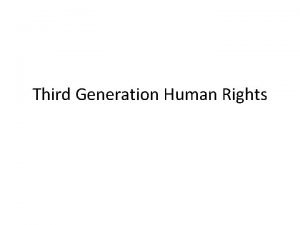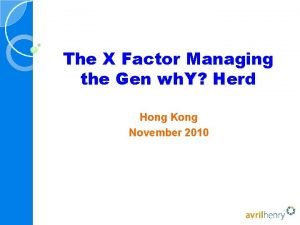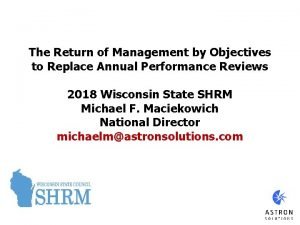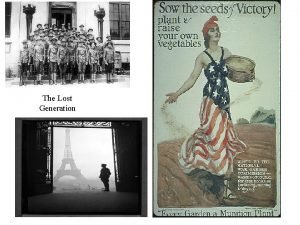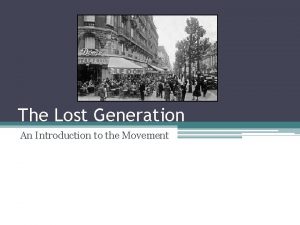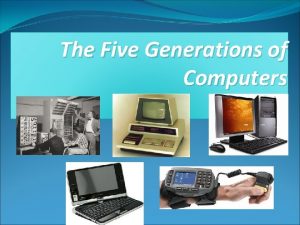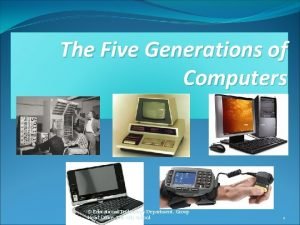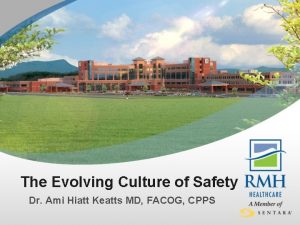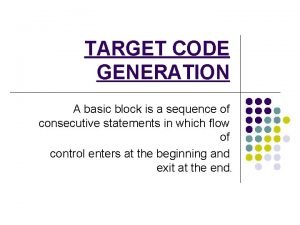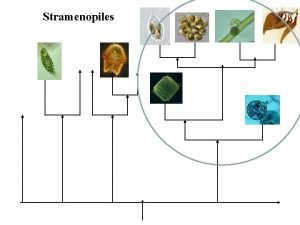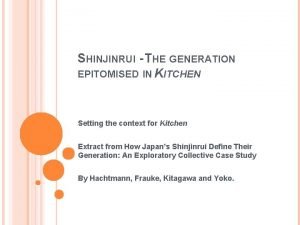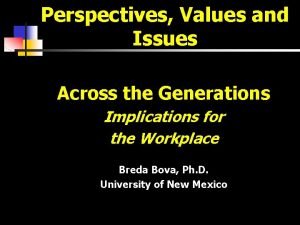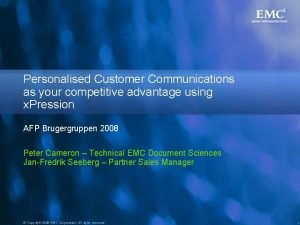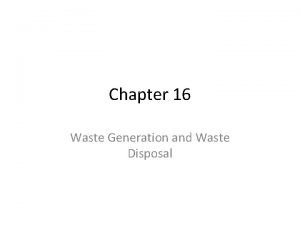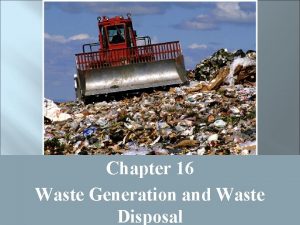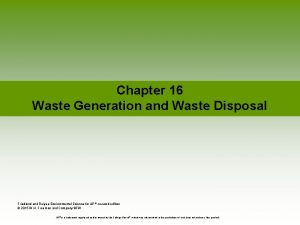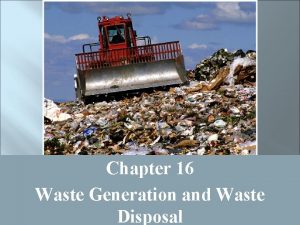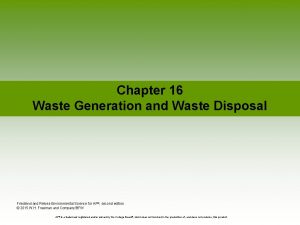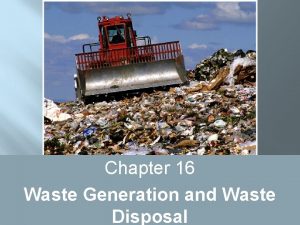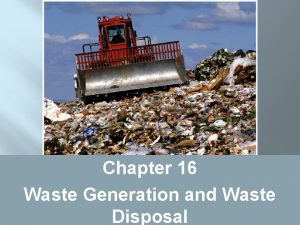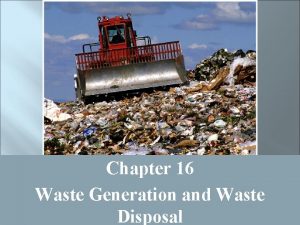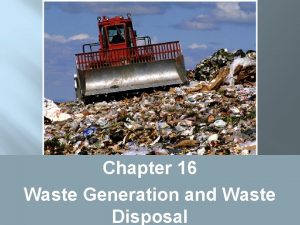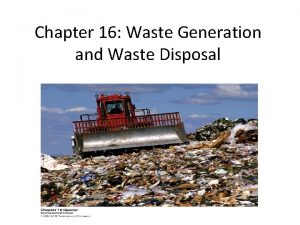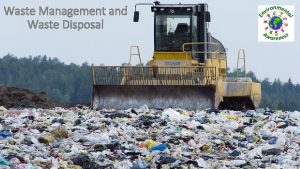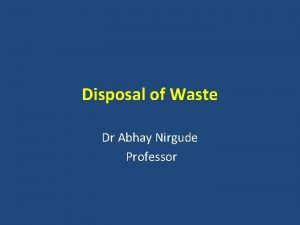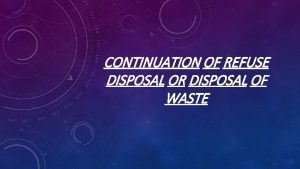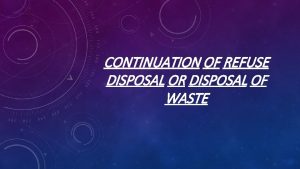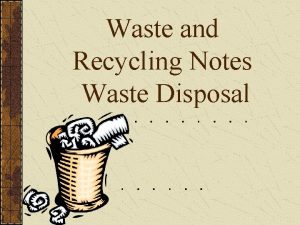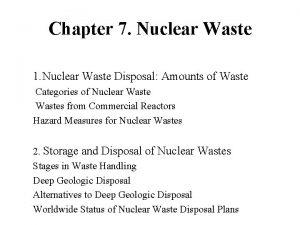Chapter 16 Waste Generation and Waste Disposal Ch






















































































- Slides: 86

Chapter 16: Waste Generation and Waste Disposal

Ch 16 Waste Learning Targets • Explain why we generate waste and describe recent waste disposal trends • Describe the content of the solid waste stream in the US • Describe and apply the 3 Rs • Understand the process and benefits of composting • Describe the goals and function of a solid waste landfill • Explain the design and purpose of a solid waste incinerator • Define hazardous waste and discuss the issues involved in handling it • Describe the regulations and legislation regarding hazardous waste • Explain the purpose of life-cycle analysis • Describe alternative ways to handle waste and waste generation

Paper or Plastic? Polystyrene(styrofoam): does not break down in landfills, made from ? ? ? . Input/Output Analysis: Cradle to grave or life cycle analysis. Paper Cup: 2 grams of petroleum, 33 grams of wood, 2 x as much energy and water(as styrofoam). S? ? : 3 grams of petroleum, no wood or bark.

Paper or Plastic? Polystyrene(styrofoam): does not break down in landfills, made from oil. Input/Output Analysis: Cradle to grave or life cycle analysis. Paper Cup: 2 grams of petroleum, 33 grams of wood, 2 x as much energy and water(as styrofoam). Styrofoam: 3 grams of petroleum, no wood or bark.

General Material Flow in an Economy: Waste: outputs! Hard to determine what is useful or not.

The Throw-Away Society • After WWII and rapid population growth US pattern consumption changed. • Items were purchased and thrown away and repurchased. • Fewer things were recycled. • Varies for geographic area, season, year, income. Municipal Solid Waste(MSW): refuse collected. ? %: residences ? %: commercial and institutional facilities.

The Throw-Away Society • After WWII and rapid population growth US pattern consumption changed. • Items were purchased and thrown away and repurchased. • Fewer things were recycled. • Varies for geographic area, season, year, income. Municipal Solid Waste(MSW): refuse collected. 60%: residences 40%: commercial and institutional facilities.


A large dump in Manila, Philippines

Content of the Solid Waste Stream: the flow of solid waste that is recycled, incinerated, placed in a solid waste landfill or disposed of in another way. 2? 1? 3?

Content of the Solid Waste Stream: the flow of solid waste that is recycled, incinerated, placed in a solid waste landfill or disposed of in another way.

E-Waste is Particularly Problematic! • ? % of waste stream, environmental effect is great.

E-Waste is Particularly Problematic! • 2% of waste stream, environmental effect is great.

• Costs more to recycle than to dispose of E-Waste. • Most is exported to ? ? and dismantled. • Contain toxic metals such as ? ? ? Name 1

• Costs more to recycle than to dispose of E-Waste. • Most is exported to China and dismantled. • Contain toxic metals such as mercury, cadmium and lead

Solving the MSW Problem • The only TRUE solution to our MSW problem is the 3 R’s (in order of preference): – Reduce – Reuse – Recycle

(1) Reduce • Source reduction – MOST EFFECTIVE!!! – Design & manufacture products in ways that decrease the volume of solid waste created. – Technological development can constantly decrease the size and weight of a product. – Uses less energy. – Which car company? ? : produced 200, 000 cars in 2009 and sent no waste to landfills.

(1) Reduce • Source reduction – MOST EFFECTIVE!!! – Design & manufacture products in ways that decrease the volume of solid waste created. – Technological development can constantly decrease the size and weight of a product. – Uses less energy. – Subaru: produced 200, 000 cars in 2009 and sent no waste to landfills.

(2) Reuse • Allows a material to cycle within a system longer before becoming an output. • NO energy or resources are needed to be reused. • Extends resource supplies and requires less energy than re-mining, re-manufacturing, etc ➢ Ex: Refillable beverage containers • Ex: Reusable shipping containers and grocery bags

(3)Recycle • Materials destined to become MSW are collected and converted into raw materials then produce new objects.

(3) Recycle • Recycle these: – Glass bottles, newspapers, steel cans, plastic bottles, cardboard, office paper • Every ton of recycled paper saves: – – ? trees ? gallons of water 4100 kwatt-hrs of energy 3 cubic yards of landfill space

(3) Recycle • Recycle these: – Glass bottles, newspapers, steel cans, plastic bottles, cardboard, office paper • Every ton of recycled paper saves: – – 17 trees 7000 gallons of water 4100 kwatt-hrs of energy 3 cubic yards of landfill space

Characteristics of Recyclable Materials ➢*Easily isolated from other waste ➢*Available in large quantities ➢ *Valuable ➢*Pay-as-you-throw garbage collection

Benefits of Recycling Reduces global warming Make fuel supplies last longer Reduces acid deposition Reduces urban air pollution Reduces energy demand Saves energy Reduces solid waste disposal Recycling Reduces mineral demand Reduces water pollution Protects species Reduces habitat destruction

(3) Recycle – “Closed Loop” System = remade into same product ➢*40% of what is? recycled in US ➢*Recycled --uses 90% fewer resources than new of this

(3) Recycle – “Closed Loop” System = remade into same product ➢*40% of aluminum recycled in US ➢*Recycled aluminum uses 90% fewer resources than new aluminum

Recycling in the US ➢*Centralized recycling of mixed wastes ➢ *Economic benefits! ➢*Recycling in the US is increasing!


USA still needs to improve: • Recycling Metals other than Aluminum – Lead, gold, iron, steel, silver and zinc • Recycling Plastic – Less than 20% is recycled – Less expensive to make plastic from raw materials than to recycle! • ☹

C? ? • Organic matter that has decomposed under controlled conditions to produce an organic-rich material that enhances soil structure, cation exchange capacity and fertility. • Includes: – Food scraps – Sewage sludge – Agricultural manure – Yard waste • Reduces yard waste in landfills. • Can be sold or distributed to community.

Composting • Organic matter that has decomposed under controlled conditions to produce an organic-rich material that enhances soil structure, cation exchange capacity and fertility. • Includes: – Food scraps – Sewage sludge – Agricultural manure – Yard waste • Reduces yard waste in landfills. • Can be sold or distributed to community.


• Air and water must be supplied to facilitate natural aerobic decomposition. • What two elements? must be in the correct ratio as dictated by green and brown material. • Piles get hot which kills microbes.

• Air and water must be supplied to facilitate natural aerobic decomposition. • N & C must be in the correct ratio as dictated by green and brown material. • Piles get hot which kills microbes.


Trash: Landfill or Incinerated • Created in the 1930 s. L? ? ? : water that leaches through the solid waste and removes various chemical compounds it comes into contact with.

Trash: Landfill or Incinerated • Created in the 1930 s. Leachate: water that leaches through the solid waste and removes various chemical compounds it comes into contact with.

Name this … • Holds MSW. • Constructed with a clay or plastic lining at the bottom. • Clay impedes the flow of water and can retain positively charged ions such as metals. • Capped when capacity is reached. • Leachate is tested for toxicity. • Tipping Fee: charge per load dropped.

Sanitary Landfills • Holds MSW. • Constructed with a clay or plastic lining at the bottom. • Clay impedes the flow of water and can retain positively charged ions such as metals. • Capped when capacity is reached. • Leachate is tested for toxicity. • Tipping Fee: charge per load dropped.

What gas? What is this?



Choosing a Site For a Sanitary Landfill • Known as a siting. • Near an area rich in which soil particle? . • Away from bodies of water (rivers, lakes, streams). • Consider distance. • NIMBY: stands for what?

Choosing a Site For a Sanitary Landfill • Known as a siting. • Near an area rich in clay. • Away from bodies of water (rivers, lakes, streams). • Consider distance. • NIMBY: not in my backyard.

Problems Associated With Landfills • Name 2

Problems Associated With Landfills • Leaking lechate. • Anaerobic decomposition: generates methane and carbon dioxide. • Methane gas can lead to explosions. • Need a specific mixture of air, moisture, and organic material to decompose to occur.

Incineration • Burning! • Produces ash. • Metals or other toxins may be released into the atmosphere or remain in the ash. Waste-to-energy: heat generated by incineration is used rather than released into the atmosphere.

Problems with Incineration Name 2

Problems with Incineration • Issues of where to “sit” them. • Releases air pollutants. • Produce ash that may be more concentrated with toxins. • Large and expensive to build. • Difficult to have a uniform burn.

Name this substance? • Liquid, solid , gas or sludge waste material. • Harmful to humans/ecosystems. • 20, 000 generators in US = 40 million ton/year • Only 5% recycled • Households generate 1. 5 million ton/year

Haz-Mats • Liquid, solid , gas or sludge waste material. • Harmful to humans/ecosystems. • 20, 000 generators in US = 40 million ton/year • Only 5% recycled • Households generate 1. 5 million ton/year

Haz-Mats • Any discarded chemical that threatens human health or the environment – Flammable, Reactive, corrosive, explosive or toxic chemicals – TOXIC: cancers, mutations, birth defects

Haz-Mat Sources • Name 3

Haz-Mat Sources • • • Cleaning machinery Manufacturing computer parts Dry cleaners Auto service stations Households: oven cleaners • Fuels, solvents, lubricants, pesticides

Haz-Mat Legislation • Name this Act (RCRA) – “Cradle to grave” documentation of Haz-Mat, protect human health, and to track the haz-mat materials. – Federal Hazardous and Solid Waste Amendment (HSWA) – encouraged waste minimization, phased out the disposal of hazardous wastes on land. Also increased law enforcement authority.

Haz-Mat Legislation • Resource Conservation and Recovery Act (RCRA) – “Cradle to grave” documentation of Haz-Mat, protect human health, and to track the haz-mat materials. – Federal Hazardous and Solid Waste Amendment (HSWA) – encouraged waste minimization, phased out the disposal of hazardous wastes on land. Also increased law enforcement authority.

Haz-Mat Legislation • Name this Act (CERCLA) (Superfund Act) – Tax producers – Clean-up abandoned sites where unknown ownership • National Priorities List (NPL) – NJ: 114 sites alone, NY/PA 94 each

Haz-Mat Legislation • Comprehensive Environmental response, Compensation, and Liability Act (CERCLA) (Superfund Act) – Tax producers – Clean-up abandoned sites where unknown ownership • National Priorities List (NPL) – NJ: 114 sites alone, NY/PA 94 each

• Superfund National Priorities List – 2006: 1558 sites on the list Find the site closest to you (EPA) National Geographic Site

Dealing with Hazardous Wastes Produce Less Waste Manipulate processes to eliminate or reduce production Recycle and reuse Convert to Less Hazardous or Nonhazardous Substances Land treatment Incineration Thermal treatment Chemical physical, and biological treatment Ocean and atmospheric assimilation Put in Perpetual Storage Landfill Underground injection Waste piles Surface impoundments Salt formations Arid region unsaturated zone

Superfund example: Name this location, NY • Hazardous Waste Landfill. Was covered with topsoil and used for a school and a housing development. • People had abnormally high incidents of cancer • 1970’s Lois Gibbs • 1983 Superfund Designation • 1994 taken off the NPL list

Superfund example: Love Canal, NY • Hazardous Waste Landfill. Was covered with topsoil and used for a school and a housing development. • People had abnormally high incidents of cancer • 1970’s Lois Gibbs • 1983 Superfund Designation • 1994 taken off the NPL list


Name these locations • Contaminated Industrial commercial areas that are not Superfunds • Cleanup/remediation before they can be redeveloped • Old factories, industrial areas, gas stations, dry cleaners, landfills, rail yards

Brownfields • Contaminated Industrial commercial areas that are not Superfunds • Cleanup/remediation before they can be redeveloped • Old factories, industrial areas, gas stations, dry cleaners, landfills, rail yards

Brownfields • State/local cleanup • Do not hold the polluter responsible • Best solution: Bioremediation

Detoxifying Wastes ➢*Bioremediation ➢-Uses organisms to break down wastes ➢-Ex: P? ? uses plants to remove wastes from soil ➢-Ex: M? uses fungi

Detoxifying Wastes ➢*Bioremediation ➢-Uses organisms to break down wastes ➢-Ex: Phytoremediation uses plants to remove wastes from soil ➢-Ex: Mycoremediation uses fungi


H? ? ? , Washington -2/3 of all US highly radioactive waste

Hanford, Washington -2/3 of all US highly radioactive waste

• Cleaning up existing hazardous waste: superfund program – Leaking chemical storage tanks and drums – Pesticides dumps – Piles of mining wastes • Must be cleaned up

Hazardous Waste Landfill Plastic cover Gas vent Topsoil Earth Sand Impervious clay cap Clay cap Leak detection system Bulk waste Reaction wastes in dreams Impervious clay Earth Groundwater monitoring well Water table Groundwater Fig. 21. 16, p. 539 Double leachate collection system Plastic double liner

Above Ground Hazardous Waste Disposal Fig. 21. 17, p. 540 Waste transporter Elevator shaft Hazardous waste Support column Inspector

Deep-well Disposal Advantages Disadvantages Name 2

Deep-well Disposal Advantages Disadvantages Safe method if sites are chosen carefully Leaks or spills at surface Wastes can be retrieved if problems develop Low cost Leaks from corrosion of well casing Existing fractures or earth quakes can allow wastes to escape into groundwater Encourages waste production

International Waste Management =Toxic colonialism – Developed countries sometimes send their waste to developing countries • Less expensive than following laws within the country • Controversial aspect of waste management

Haz-Mats-International • Let’s Just Ship it to Africa! • Khian Sea, Philadelphia • Indian Hg imported into US for reprocessing Bhopal Accident

Life-Cycle Analysis (Cradle to Grave Analysis) • Maps the materials used and released throughout the lifetime of the product • Opener: paper cup-v-polystyrene cup • Environmental impacts quantified • Economic impact quantified • Social impacts quantified

Life-Cycle Analysis (Cradle to Grave Analysis) • Cost of disposal: Direct payment or indirect payment • ~recyclables cost less than MSW for disposal • Global market forces influence prices of recyclables

Integrated Waste Management • Holistic approach (“from all angles”) • W. Mc. Donough’s book Cradle to Cradle – New approach to manufacturing – Develop products for disassembly – Ex: Volkswagen – Ex: carpeting

Integrated Waste Management

WST: Recycling e. Waste in Chile • Lead, mercury, cadmium • Fully assembled products are exported as e. Waste • Name this company? : the manufacturing company is responsible for the safe disposal of their product Pay to recycle today, or our children will pay in the future….

WST: Recycling e. Waste in Chile • Lead, mercury, cadmium • Fully assembled products are exported as e. Waste • Green Seal: the manufacturing company is responsible for the safe disposal of their product Pay to recycle today, or our children will pay in the future….

Nike “Reuse-ASneaker” • →Poor unsafe working conditions • →Inadequate wages • →Toxic solvents, adhesives, and rubber manufacturing • →VOC’s Imposed a Cradle to Grave Analysis • “Nike Considered”: likert scale of sustainability at each step in the process • Friendlier adhesives/rubber • Organic Exchange Cotton • Reuse-A-Shoe ✓ Nike Grind

Ch. 16 Waste Learning Check
 Waste collection lindsay
Waste collection lindsay Disposing of veterinary clinical waste
Disposing of veterinary clinical waste Color coding for waste disposal
Color coding for waste disposal Waste disposal lyndon
Waste disposal lyndon Waste management 3
Waste management 3 Biomedical waste management introduction
Biomedical waste management introduction Waste bowling green
Waste bowling green Can gypsum be recycled
Can gypsum be recycled Grenada trash haulers
Grenada trash haulers Arnprior waste disposal site
Arnprior waste disposal site Alpine waste disposal
Alpine waste disposal Summary of biomedical waste management
Summary of biomedical waste management Controlled tipping trench method
Controlled tipping trench method Solid waste disposal introduction
Solid waste disposal introduction Medical waste packaging
Medical waste packaging Disposing of veterinary clinical waste
Disposing of veterinary clinical waste Definition of solid waste management
Definition of solid waste management Waste disposal palm coast
Waste disposal palm coast Stillwater ok waste disposal
Stillwater ok waste disposal Hand washing steps according to nabh
Hand washing steps according to nabh Keller hazardous waste disposal
Keller hazardous waste disposal Grenada trash collection
Grenada trash collection Matthews waste disposal
Matthews waste disposal Milner waste management
Milner waste management Stahl
Stahl Lord you are good and your mercy is forever
Lord you are good and your mercy is forever Retention and disposal of gmp documents
Retention and disposal of gmp documents Condemnation and disposal in material management
Condemnation and disposal in material management Rupinder deol
Rupinder deol Fixed assets presentation slides
Fixed assets presentation slides Technical guidelines for disposal to land
Technical guidelines for disposal to land Animal safety symbol
Animal safety symbol When disposal materials are dropped
When disposal materials are dropped Anatomy of a garbage disposal
Anatomy of a garbage disposal Battery disposal certificate
Battery disposal certificate Hbs disposal
Hbs disposal Disposal alert symbol
Disposal alert symbol What is fullness in garment
What is fullness in garment Ounderground
Ounderground Disposal by dilution
Disposal by dilution Disposition in sdlc
Disposition in sdlc Disposal of garbage clive
Disposal of garbage clive Transite pipe disposal
Transite pipe disposal Sharps disposal tweezers
Sharps disposal tweezers Nsd disposal
Nsd disposal Medsaway medication disposal system
Medsaway medication disposal system Grade 10 accounting syllabus
Grade 10 accounting syllabus Truck and plant assets
Truck and plant assets Disposerx ingestion
Disposerx ingestion Data tape disposal
Data tape disposal Chemical and waste management chapter 23
Chemical and waste management chapter 23 Chapter 19 waste management answers
Chapter 19 waste management answers Generation genius physical and chemical changes
Generation genius physical and chemical changes What is new entry in entrepreneurship
What is new entry in entrepreneurship 2 generation cephalosporins
2 generation cephalosporins Pharmoco
Pharmoco Speech digitization and generation in hci
Speech digitization and generation in hci Intermediate representation
Intermediate representation 4th generation of computer images
4th generation of computer images Pgp message generation and reception
Pgp message generation and reception Generation of high voltage and current
Generation of high voltage and current Business idea generation
Business idea generation What is the lost generation in the great gatsby
What is the lost generation in the great gatsby Discretization and concept hierarchy generation
Discretization and concept hierarchy generation Automated generation and analysis of attack graphs
Automated generation and analysis of attack graphs Generational differences chart
Generational differences chart First generation of video game consoles
First generation of video game consoles 2008 generation called
2008 generation called Trip generation
Trip generation Tor the second generation onion router
Tor the second generation onion router First generation of human rights
First generation of human rights Generation y characteristics
Generation y characteristics Why is the lost generation called that
Why is the lost generation called that Steps in mbo
Steps in mbo The lost generation years
The lost generation years The lost generation years
The lost generation years The lost generation facts
The lost generation facts Generation of computer 1st to 5th
Generation of computer 1st to 5th 4th generation of computer
4th generation of computer 1944 generation name
1944 generation name Lllloop
Lllloop What is isomorphic alternation of generation
What is isomorphic alternation of generation Shinjinrui
Shinjinrui Advantages and disadvantages of scan line fill algorithm
Advantages and disadvantages of scan line fill algorithm Idea generation contoh
Idea generation contoh Generation y characteristics
Generation y characteristics Personalised customer communication
Personalised customer communication

